The 2nd Diversity, Equity, Inclusion and Accessibility Kimeza
Voices of the Indigenous Peoples in Uganda at the USAID Mission
On January 30th, 2022, representatives of the Ik and Tepeth communities, together with a team from Makerere University – ResilientAfrica Network (RAN) and Gulu University Constituent College (GUCC), engaged with 23 United States Agency for International Development (USAID) Uganda Mission staff. This engagement took place at the Uganda Mission premises. USAID/Uganda has been working with RAN and GUCC under the LASER-PULSE Consortium to implement research activities within the indigenous people’s communities since 2019. This activity is being implemented with funding from USAID through Purdue University . The engagement was an opportunity for the Ugandan indigenous people representatives to share about the ongoing efforts to salvage their culture, language, and beliefs; as part of the ongoing work in their communities in addition to sharing life experiences. “Today, we are here to learn more about the Ik and Tepeth so that we can all further meaningfully contribute to Uganda’s developmental efforts. The team at the Mission needs to know about the Ik and Tepeth among other indigenous populations, be inclusive and try to make all programs available to the communities, said Denis Okwar, Regional Development Advisor, Office of Program & Policy Development at the USAID Uganda Mission.
At the USAID Uganda Mission, the Diversity, Equity, Inclusion and Accessibility (DEIA) Kimeza is a roundtable discussion and gathering of the community members to discuss related issues with a purpose of knowing groups of people in Uganda that have been marginalized and or under privileged. This was the second Kimeza.
The DEIA Kimeza. Photo Credit: USAID/Uganda.
A Highlight of the Discussions
The Tepeth live in Moroto on and along the mountain slopes, along the borders of Uganda and Kenya. In their communities, there is no means of transport and so they walk from place to place in an effort to reach out for community services including health, education, and food, among others.
The Tepeth comprise a small community of about 36,000 people and they are inhabitants of the Karamoja region who speak the So language. Tepeth is a nickname given to them as a marginalized community. They are largely fruit gatherers and survive on wild fruits and honey. For a Tepeth man to marry a wife, he must invest in taking a lot of honey to the in-laws, although with modernization, the Tepeth have adapted Agriculture. They cultivate under trees because they like to protect the environment. They disagree with the Matheniko who at times come into their communities to burn charcoal. “For the far we have come, we appreciate the efforts of the Government of the Republic of Uganda for they have made it possible for us to live on,” said Stephany Adupa, LCV Female Counselor for Tapac sub-County, Tepeth County, Moroto District. “When we were given a county, we became enlightened. I, for example, left Kampala in 2008 and I am only returning to Kampala in 2023” she added. She is a university graduate, and said many indigenous people study hard although it is very hard to secure a job to earn a living because of ongoing marginalization. She opted to join politics, even though the indigenous people are not involved in decision-making or even debating in community councils due to the majority-takes-all system. She concluded by saying “The Tepeth have arrived, we are here now walking into the world. We want to walk this journey together. Thank you so much for inviting us to the USAID Uganda Mission, engaging with us and listening in to our experiences.”
Stephany Adupa (right), LCV Female Counselor for Tapac sub-County, Tepeth County, Moroto District. Photo Credit: USAID/Uganda.
The Ik are largely inhabitants of Kaabong and they are not cattle keepers. They believe that God does not approve for them to keep animals. For dowry, the husband-to-be presents hoes, spears, art, craft items, and guards to his in-laws-to-be. While intermarriages are happening now, it previously was difficult for another tribe to marry or get married to members of the Ik community, for fear of violence. When a member of the Ik community married someone from another tribe, the others would come and raid the home. If they married a fellow Ik, they would not pay dowry. The Ik people live on the borders of South Sudan and Kenya, and they have lived in this area since before other communities arrived. The Ik population is about 18,000 people, and they largely survive on wild fruits. “We like people like you who call us for identification. Other tribes do not recognize us, yet we are the furthest from development in Uganda, we are vulnerable, have two primary schools, three community primary schools with only one secondary school,” said Lotyang Peter Chilla, LC III Chairperson Morumole sub-county in Kaabong district.
Juliana Namongo (left), an active farmer among the Ik community, sharing experiences at the engagement. Photo Credit: USAID/Uganda.
One of the challenges they face in their community is poor access to education, and to make the living conditions worse, one of the few schools in the community, despite having 20 learners, has no teachers. The schools are not fenced off, and when the enemies come, they can easily attack and harm learners, teachers, and other school staff. The communities have very few health centers, with no road access, making use of community facilities complicated and difficult. They also noted that internet connectivity is very poor in their communities, and to receive or make a phone call, one has to climb up a tree or hike up the mountain. It was also shared that the Ik do not kill other community members, they do not raid, they are peaceful people although they live in an area which is locationally insecure.
Participants joined in a group photo after the engagement at the USAID Mission, Uganda. Photo Credit: USAID/Uganda.
The indigenous people requested meeting participants to be their voice, noting that their cry does not reach several stakeholders who could have joined in the efforts to improve their living conditions. They appreciated the ongoing work with funding from USAID, noting that the youth are very active in their communities and looking for survival since earning a living is important. They also extended an invitation to the meeting participants to visit their communities and appreciate seeing things, such as a maize cob as big as a human’s arm. This is evidence that the soil is fertile and can be leveraged for large scale commercial agriculture.
Melissa Chipili, USAID/Uganda, thanked all the meeting participants indicating that it is through such engagements that we all are able to further generate and share knowledge as we strive to positively impact the communities in which we live and serve.
More pictures are shared on https://drive.google.com/drive/folders/1-52cEtuWEUONnjnelAdztk-ZWHEbQAQi
Compiled By: Harriet Adong, Director Communications, Learning and Knowledge Management at Makerere University – ResilientAfrica Network (RAN).
Contributors: Nils Bergeson, Program Officer USAID, Kampala Uganda and Supervisory Development, Outreach, and Communications Officer USAID Kampala, Uganda.

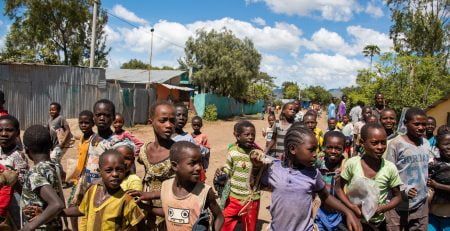
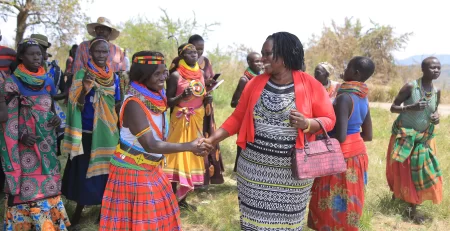
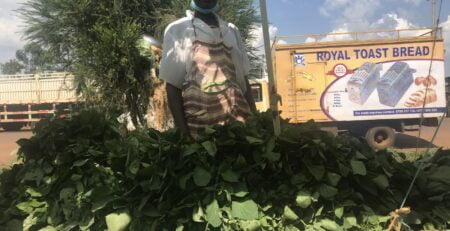
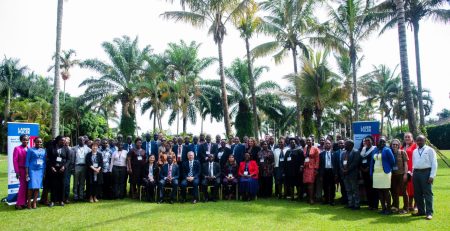
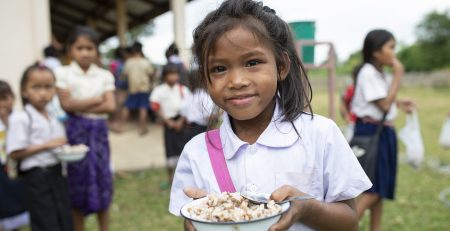

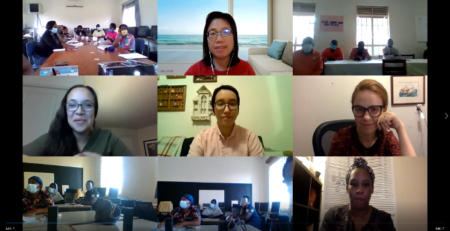

Leave a Reply
You must be logged in to post a comment.